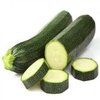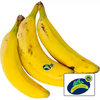swede: It is also called Swedish turnip. It is a thickened root similar to the turnip and contains a small amount of sugars as well as containing a lot of fiber. It is large and its flesh yellowish, and depending on the external color of its skin there are green and purple rutabagas. They only differ in the color of their skin since their nutritional value is identical. Food and nutrition It can be included in the diet of people with cardiovascular problems and hypertension, due to its content of potassium, phosphorus and magnesium, as well as its low sodium content. In turn, it is a diuretic food, so it can be included in the diet of kidney patients. The leaves of the rutabaga plant can be consumed and these have greater nutritional value than the bulb, especially in carotenes, vitamin C, calcium, phosphorus and iron, and can even double the amount present with respect to the bulb. The Fruit The rutabaga (Brassica napus var. Napobrassica) is also called rutabaga or turnip from Sweden. It is a thickened root similar to the turnip and contains a modest amount of sugars as well as being a source of fiber. It is large and yellowish pulp, and depending on the external color of its skin there are green and purple rutabagas. They only differ in the color of their skin since their nutritional value is identical. The rutabaga has a high water content and low caloric intake (only 21-35 kcal per 100 g of fresh product), so they are usually included in low-calorie diets, especially salads and cooked. After water, carbohydrates are the main nutrients. Among its minerals, potassium stands out. In the market should be selected those that are not more than 7 cm in diameter to ensure a good flavor. In the home, the leaves should be separated from the bulb and stored in the refrigerator in perforated plastic bags and kept in such conditions for two weeks. Red rutabagas are often preferred, simply because of the attractiveness of their color. They can be consumed boiled, fried and even raw, grated in salads. Usually they are prepared peeled, chopped and boiled and then turned into puree. In addition, you can also use the leaves of the plant, provided they are tender, in stews, the nutritional value being higher than that of the bulbs. The yield of this product varies between 40 and 60t / ha, being this much higher than in the turnip. The plant The rutabaga plant belongs to the Cruciferae family and its scientific name is Brassica campestris, var. napobrassica D.C It is a plant very similar to the turnip morphologically. The major difference with this is that its roots are elongated or rounded and end in a cylindrical neck in which the leaves are inserted. Other morphological differences may be a more bluish color of the leaves and a greater plant span. It is well adapted to grow in the colder, wetter conditions of northern Europe, where it is widely grown for both human and animal consumption.




















